
article
Telescope Buyer's Guide - Brand New Edition
Toyotaman
06.09.22 - If you decide to take the plunge into the world of astronomy and buy a telescope, but feel overwhelmed trying to navigate the second-hand market, chances are you will probably buy a brand new telescope. In today's day and age of online shopping being dominated by corporate giants, the first instinct many of us have when buying something is to buy it off massive online stores, such as Amazon.
While buying directly off the "Amazon's Choice" list generally gives good results and satisfaction in most areas, this strategy does not apply to telescopes. Many of the telescopes that you find topping the search results of Amazon have good reviews written by clueless users, but lack the optical quality needed for actual astronomical observations. Furthermore, Amazon sellers often will not have the technical expertise necessary in troubleshooting your telescope, which can lead to budding astronomers feeling lost and confused, having their hobby killed because of lack of support.
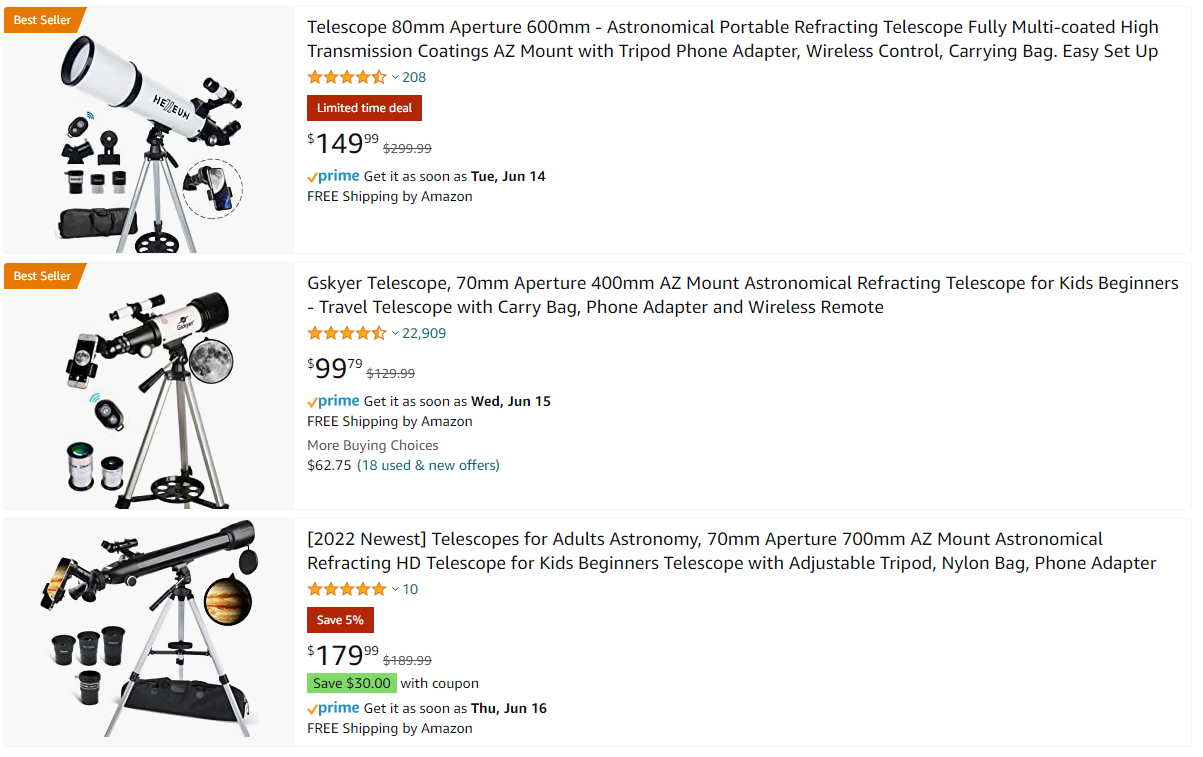
Avoid these cheap telescopes, they are called "hobby killers" for a reason.
With this in mind, the first step in getting a new telescope is buying from an actual telescope retailer. In general, not only will you be paying for higher-quality telescopes, but you will also have access to better customer service and support, which is crucial as a first-timer in figuring out how to use your brand-new telescope, potentially leading to an awe-invoking moment when observing for the first time... provided that you aren't cursed by the "telescope buyer's curse" and experience heavy cloud cover immediately after you get a new scope.
The most important consideration in choosing a telescope, however, is choosing one that fits your lifestyle. Far too often someone listens to the retarded advice on the r/telescopes subreddit and buy a huge Dobsonian that they will never use because it is too heavy to routinely carry out. Or, someone buys a telescope that is good for widefield objects but poor for planetary observation when all they wanted is to see the planets. This ultimately never allows progression in the hobby. So, to avoid this, ask yourself first, "What kind of telescope would suit me?" before looking at the advice in this guide. You will find that buying a telescope that fits your lifestyle will lead to much more enjoyment than buying something that doesn't suit your lifetstyle.
Some common terms used in this article:
- Aperture: the diameter of the primary optical component of a telescope. A larger aperture will collect more light and also allows for a higher theoretical resolution.
- Focal Length: the base magnification of a telescope, a larger number for focal length translates to higher magnifications.
- Focal ratio: focal length divided by the aperture of a telescope. A lower focal ratio such as f/4, also called a fast focal ratio, generally results in images that appear brighter at the expense of optical distortions in most cases. Similarly, a larger focal ratio such as f/8 generally has dimmer images.
- Mount: mates the telescope (in this case referred to as the optical tube assembly) to a tripod. Two versions are available: the equatorial mount which needs alignment to the pole star, or the altitude-azimuth mount which acts like a normal camera tripod.
- Eyepiece: enables the human eye to focus the light collected by the telescope.
- Chromatic abberation: an optical distortion where light of different colors are not focused at the same point, resulting in color fringing.
- Coma: an optical distortion that makes point sources of light look like small comets. Usually occurs with fast focal ratio newtonian reflector telescopes.
Links to all products in this article will be provided at the bottom of the page.
Note: this guide is intended for visual astronomy only.
For budgets not exceeding $100
Most newbie astronomers usually don't spend more than $100 on a telescope. At this low price point, it can be hard to find anything that has enough quality and features to turn a curious newbie into a nerd. Furthermore, this post-pandemic world of Bidenflation and supply chain issues raises the price of telescopes, meaning that it is extremely difficult to find anything new that can help you nurture your hobby. Yet, this is possible.
The original generally-agreed-upon recommendation for newbies was the Orion Short-Tube 80 refractor telescope (commonly referred to as the ST80). This small telescope not only has a relatively big aperture of 80mm for collecting lots of light, it also has a short focal length of 400mm with a fast focal ratio of f/4, leading to a wide field of view that gives you expansive sights of the universe. With a 2x magnification increasing barlow lens, it also gives acceptable views of the planets, with Jupiter, Saturn, and their brightest moons being visible. However, it unfortunately is no longer listed under a $100 price tag, which disqualifies it from this price bracket.
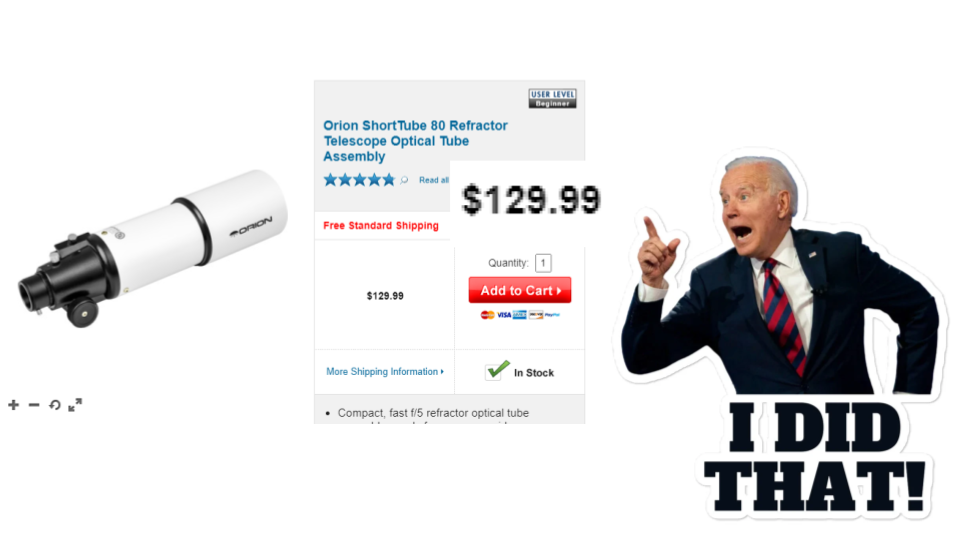
Let's go Brandon! (This thing originally costed $90 until 2021)
There, however, are a few comparable candidates at this price bracket. Many astronomers recommend a table-top dobsonian newtonian telescope as a first telescope. An advantage of Newtonians over refractors is that they use mirrors to collect incoming light. A refractor, on the other hand, uses glass lenses to collect light, which end up bending different wavelengths of light at a slightly different angle as light passes through the lens, leading to a horrible red and blue fringing effect at the edges of the object you are observing. This is called chromatic aberration, and plagues most cheap refractor telescopes. Cheap newtonians, which use mirrors, do not suffer from chromatic aberration. Additionally, the dobsonian mount is much more stable than any tripod at this price point, which means there's less frustration in finding celestial objects while observing.
However, at this price point, many of these cheap dobsonians use spherical mirrors. These are the kind of mirrors that you use to shave, not to do any serious observing. While this optical design's issues are not that noticeable at lower magnifications, trying to put on higher magnifications for doing planetary observations leads to the planets looking like the grease blobs you find at the bottom of a McDonald's sink. This is exacerbated by the short focal ratio of many of these telescopes, leading to generally poor planetary observational performance. Thus, table-top dobsonians at this price point are recommended only for low-power observation, such as for viewing star clusters, bright nebulae, and nearby galaxies.
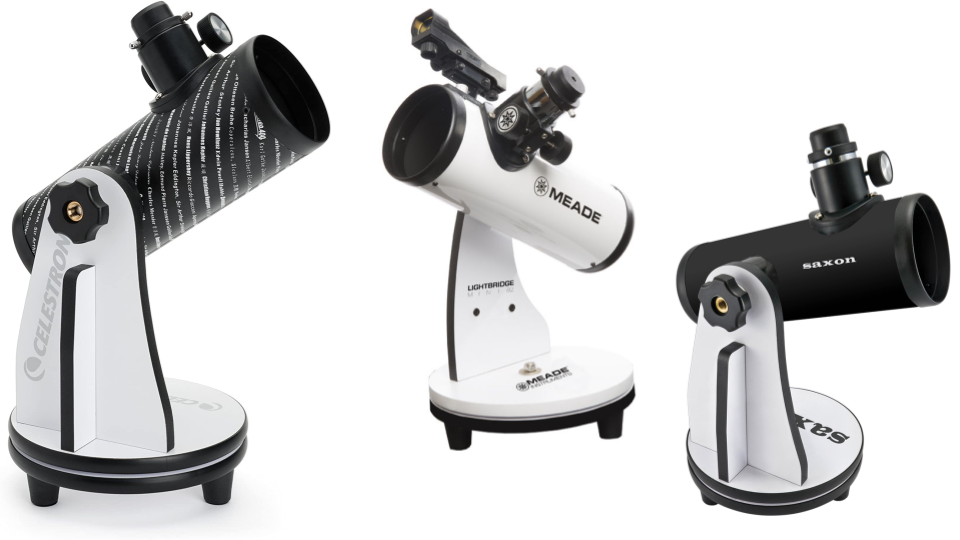
Cheap reflectors have good value but also a fair share of problems such as non-astronomical grade mirrors.
The Orion Funscope is one such recommended scope, being a small dobsonian with a 76mm aperture using a spherical mirror. The accessories that come with it are decent; they include a red dot sight for finding celestial objects easily, 20mm and 5mm eyepieces, and a barlow lens for high power views. Again, though, this scope is only commendable for low-power views, so expect yourself to reach for the 20mm eyepiece for the most part. This scope also has many similar copies made by other companies such as the Celestron Firstscope, the Meade Lightbridge 76, and so on. They are likely all made by the same children working inside a Chinese factory, and the uniform price point of around $75 for all of them reflects that fact.
Note: The SkyWatcher Heritage 76p actually had a proper parabolic mirror leading to improved optical quality, but it was discontinued due to supply chain issues. If you can find it for sale, it is a much better table-top dobsonian than anything else on the market.
For planetary views, a larger focal length is necessary. However, the longest focal ratios you can get at this price point come only from long thin refractors, which have slight chromatic aberration as an issue. Nonetheless, they will outperform even a larger table top dobsonian at planetary views simply due to their longer focal length and the fact that they have the correct optics for the job. Any variety of the 60mm or 70mm refractor with a focal ratio in the f/15 range will provide the best planetary views at this price point. Some common examples are the Celestron Astromaster 70AZ, the Celestron Powerseeker 60AZ, The Orion Observer II 60AZ, and the iOptron iExplore 70AZ, all of which can be had for $60-$100 nowadays.
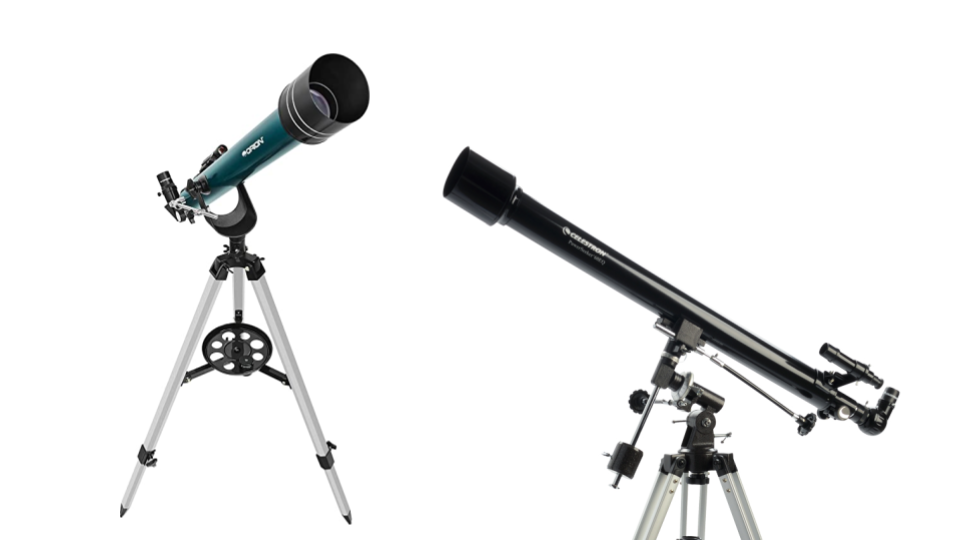
It's hard to find a cheap refractor that's good for anything outside of planetary views. Most of them are long and thin, not designed for any wide-field observing.
One unusual contender is the Celestron 70mm Travel Scope or the Orion GoScope III. Normally at $105, as prices fluctuate it is possible to get this scope for $95. Design-wise, they are 70mm short-tube refractors similar to the Orion ST80 and are best reserved for widefield views, although they beat the Orion Funscope and its variants in planetary observation due to better optics. Think of these scopes as an "in-between" that can do both planetary and deep-sky objects reasonably well. The accessories are unusually extensive including a padded backpack; therefore, the telescope is very well protected in transit, especially crucial if you decided to stargaze while camping at a dark-sky site. If you don't know which objects you enjoy observing yet or if you are someone who's constantly on the move, this is the scope for you as it is the most versatile choice at this price point.

The venerable Celestron Travel Scope, designed to do exactly what its name suggests.
For budgets not exceeding $200
At this price point, there is a marked jump in quality and versatility in telescopes you can purchase. Chances are, people shopping on this budget already have a growing interest in astronomy, or are newbies that wisely saved up for more capable telescopes and have more background knowledge of the terminology and mechanics behind astronomy.
The immediate first recommendation for a telescope within this budget is the Orion ST80 or any one of its derivatives sold by Meade, Omegon, and so on under various names. The optical tube alone costs $130 nowadays for the Orion version. After additionally buying the accessories necessary to operate the telescope such as eyepieces, diagonal, tripod, and so on, the total cost comes to about $200. What you get, however, is a very capable and compact scope that neatly fits into any backpack and can be considered a travel scope. Being an achromatic refractor with a fast focal ratio, chromatic aberration is a noticeable visual artifact when observing the brightest objects such as double stars and solar system objects. However, it's one of the first telescopes with appreciable performance on dimmer objects, such as distant globular clusters and galaxies. As previously stated, if you enjoy widefield observation and are also constantly on the move, this telescope is for you. Note: Orion also makes an inferior version called the CT80 which uses much more plastic parts and also has an atrocious quality glass, just avoid it despite the more attractive price tag and lightness.
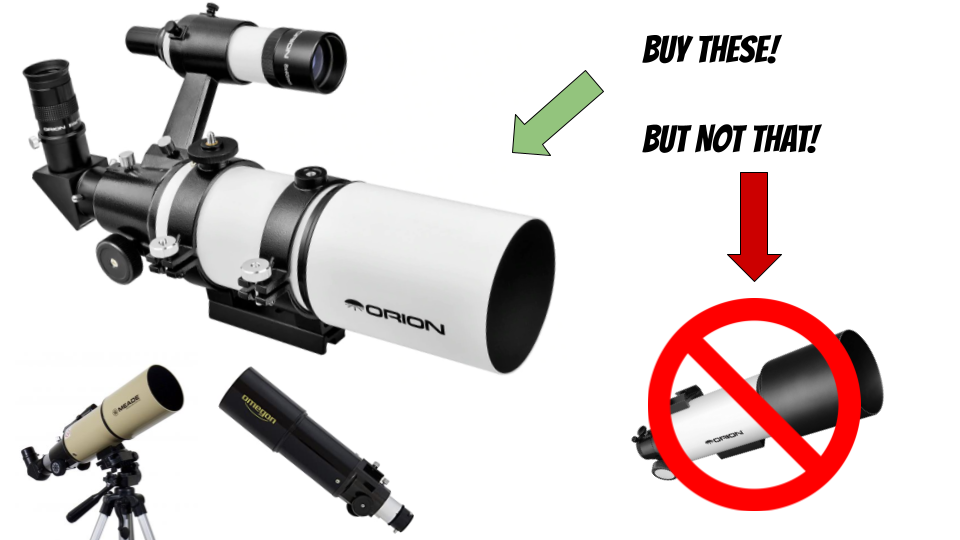
There are many Short Tube 80 variants, most of them are good but avoid the CT80 at all costs.
Alternatively, you can choose a refractor with a longer focal ratio such as the Powerseeker 80EQ from Celestron if you are more interested in planetary and lunar observation. Optics are similar to the smaller cousins, being a small refractor with a long focal ratio allowing for higher magnification. While the accessories included are expansive, the equatorial mount for the telescope is very frustrating to use for new astronomers and will take patience and tinkering to bring it to its full potential. These scopes are available for $200 nominally, but due to their bulk they don't make great travel scopes.

Think of the Powerseeker 80EQ as an enlarged 60mm long thin refractor.
Newtonians at the price point finally begin to have acceptable optics, with a select few models ditching the spherical mirrors found in their cheaper counterparts for proper parabolic mirrors. These newtonians also have the ability to collimate their mirrors, which means aligning them to provide optimal optical performance. However, some Newtonians with spherical mirrors can still be found at this price point; in particular, avoid the Powerseeker 127 from Celestron and other similar models as they have spherical mirrors and some of the worst mirror cells ever designed, leading to nigh-impossible collimation.
Below $200, the 100mm table-top Dobsonian dominates, and for a good reason. The aperture is large enough to begin resolving fainter details such as wisps of dust in the brightest nebulae when observing, and the Dobsonian mount provides a very stable base. Some of the most popular models are the Zhumell Z100 and the Orion Skyscanner series which come in two versions, the original 100mm version and the 102mm black edition. Functionally there is minimal difference in the quality of any of these scopes: collimation is a nightmare as usual, the light gathering ability is superb for the price point, and the accessories provided are generally the same throughout all the models, so really your purchasing choice depends on which color you like the most. Make sure to check that the mirrors are parabolic and not spherical from specifications, the Orion and Zhumell models both use parabolic mirrors but the offerings from Celestron and other manufacturers often use spherical mirrors. These scopes can be found from $140 to $190.
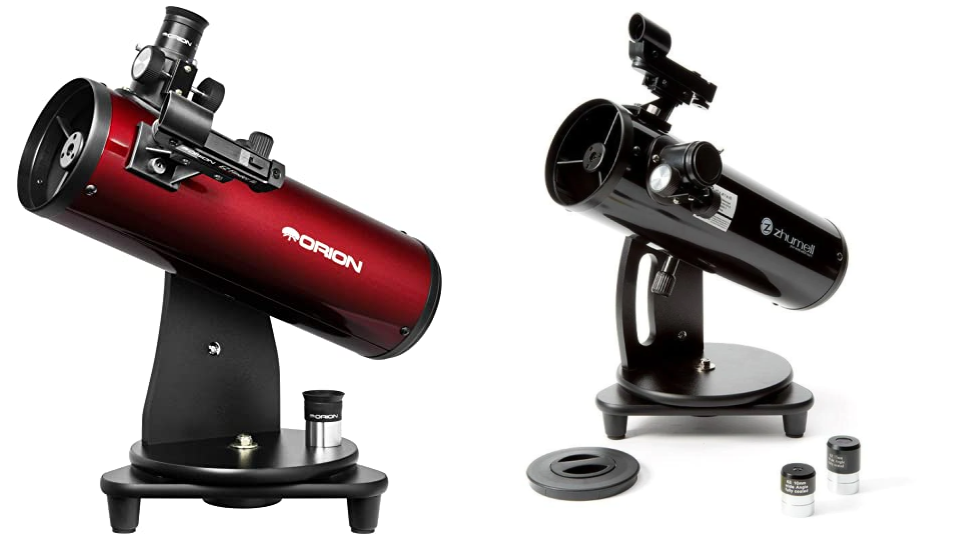
These two scopes are alright and can be relied upon for the growing astronomer.
With the left-over money from purchasing these telescopes, there are a few key upgrades that you should consider to improve your experience. A good wide-angle eyepiece in the 15-25mm range will allow a larger apparent field of view, useful for tackling the largest objects in the night sky such as the Andromeda Galaxy. The SVBONY 68 Degree Ultrawide series eyepieces are highly recommended for their performance and value at $45 apiece. Alternatively, if you are an eyeglasses wearer, an eyepiece with a long eye relief allows you to observe with your glasses on, which provides a much more comfortable observing experience due to less eye strain. The SVBONY 66 Degree "Goldlines" offer excellent eye relief at $35 apiece. Both these eyepieces have 1.25" barrels so compatibility with focusers is never an issue.

The kids in the Chinese factories did a great job making these.
For budgets not exceeding $400
While $200 telescopes do offer a lot of value for the money, doubling the budget to $400 minimizes many of the trade-offs found in the cheaper telescopes. Many of these improvements are quality of life related such as more stable mounts, which can combine into a more pleasant observing experience. You can also expect larger optics with even better quality, allowing you to see even fainter objects in the night sky such as planetary nebulae and distant galaxies. Your choice in accessories also increases, as well as specialization or versatility in telescope design. It's likely that you will also try some DIY work on this budget, so if you are feeling particularly adventurous you can try some beginners' diy work such as making a homemade mount for your optical tube. Any moneuy left over can also be used to invest in better accessories, although the aforementioned eyepieces are still good even at this increased price range.
Above $200, the optical quality and light gathering capacity of reflector telescopes finally begins to overtake that of refractor telescopes, although refractors are still useful for their portability and higher contrast for planetary observations than most reflecting telescopes due to a smaller central obstruction. You will also begin having access to Cassegrain telescopes, which are not only compact but also have the longest focal lengths making them extremely good for planetary and lunar observation.
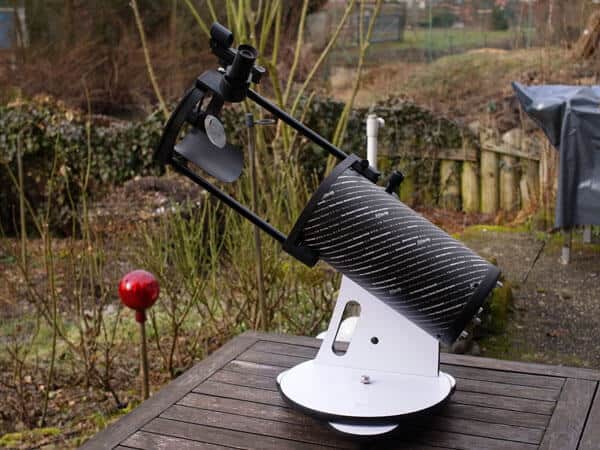
Quite possibly one of the best starting scopes for the serious astronomer, at least before inflation and the pandemic hit.
The SkyWatcher Heritage 130p is one of the best table-top Dobsonians available on a sub-$300 budget. It has a large 5" aperture, coupled with a proper parabolic mirror and exotic coatings and a unique collapsible design that makes stowage easier. Its helical focuser is nothing special, though, and the included eyepieces are kinda trash. A fast focal ratio of f/5 also means that coma, a visual effect plaguing reflector telescopes with focal ratios faster than f/6, can be visible under certain circumstances. Nonetheless, thanks to the somewhat large parabolic primary mirror, it can easily view a variety of objects ranging from double stars to dimmer Messier objects. The main issue, however, is that due to supply chain issues it is rarely available at $174, its original MSRP price. More often, it can be found hovering around $275, although it's still recommendable at this inflated price. When it does come up for sale though, grab it quickly.
If you want even more performance, however, there is a bigger option available in the form of GSO 6" Newtonian reflectors. These come in a variety of focal ratios ranging from f/6 to f/4; however, the f/4 has such a fast focal ratio that coma completely dominates during any observing, necessitating the purchase of a minimum $100 coma corrector that pushes the 6" f/4 over budget. Nonetheless, the f/5 is the best recommendation as it is fast enough for observing even the dimmest messier objects under light-polluted skies while offering enough focal length to begin resolving smaller surface details in the planets. The f/6 will suffer from no coma and is even better for planetary views at the expense of deep space object views. They can be had for $300, but you will need to source your own tripod or mount, finder scope, and eyepieces. Commonly, many users of these telescopes make their own Dobsonian mount out of plywood, teflon, and wood screws. If DIY work is not your thing, however, you can buy complete version, the 6" SkyWatcher Heritage 150p which comes in at $320, but it has a long back-order list with uncertain lead times, making it a hard recommendation under today's circumstances as the wait time might not be worth it.
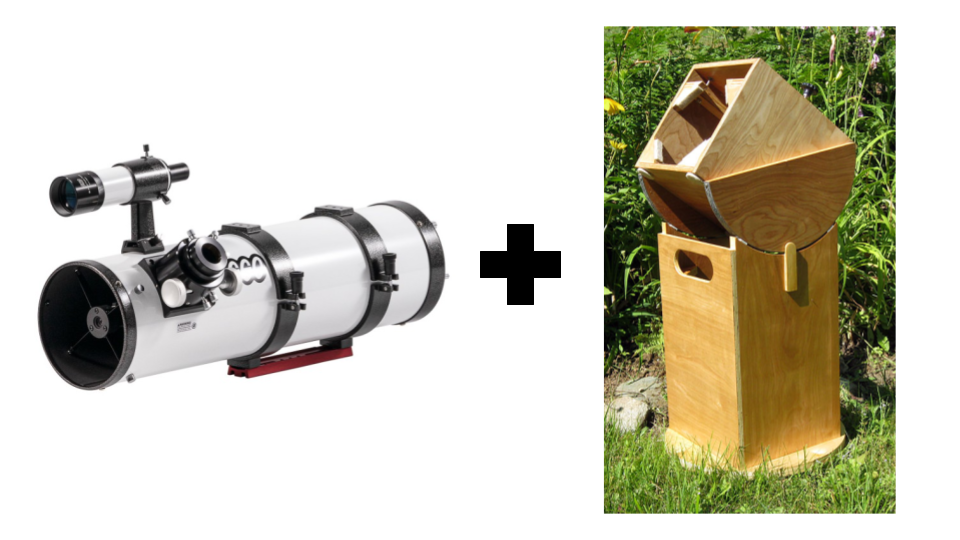
For those who have even basic DIY skills, this combination will yield a lifetime of enjoyment.
If your taste in telescopes is refractors, the dominant design is a 4"/102mm refractor in this price range. Refractors have no central obstruction so contrast is improved, although most of these offerings are still achromatic designs so expect a small amount of color fringing. Some good examples of what to buy are the Explore Scientific Firstlight 102 which has excellent coatings and a decent mount for $330, or the Celestron Omni XLT 102 with a lighter-duty mount for $300. These two scopes have a focal ratio in the f/9 range and a focal length in the 1000mm range meaning that chromatic aberration is less noticeable while the big aperture of 4" can outperform even a 6" Newtonian under certain conditions. They are best suited for high power views, such as for planets and double stars, while giving good views of brighter Messier objects such as globular clusters. However, if you are more interested in a wide field of view, the SkyWatcher StarTravel 102AZ3 f/4.9 has a much faster focal ratio and shorter focal length that produces the brightest and widest images at the cost of chromatic aberration. It sells for $400, so it is the most expensive achromat of the bunch.
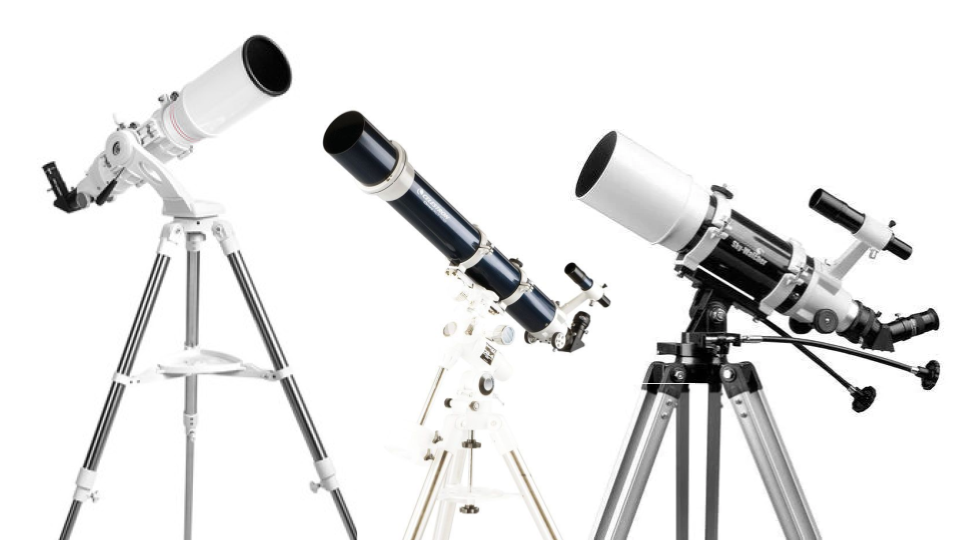
Under certain conditions such as in rural skies, a small 4" refractor can outperform the more popular 6" newtonian reflector.
If you are the person who is solely interested in the highest power views and cares little about anything else, however, the best choice would be none of the telescopes above. Instead, a new category of telescope is the standard recommendation: the Maksutov-Cassegrain. Even with relatively small apertures, this telescope design can achieve absurd focal lengths making them exceptionally suitable for planetary and double star observing. Furthermore, unlike newtonians or refractors, these Maksutovs suffer from no oprtical distortions at all. The Celestron C90 achieves a whopping 1250mm of focal length through only 90mm of aperture. For only $290 for the optical tube, this is a very compact yet capable telescope that excels at even the highest magnifications. The SkyWatcher Skymax 102 is larger in aperture for more light gathering capability and comes in at $320 but only has 50mm more focal length. You will need to source a mount and tripod for both these scopes, although it should be noted that these scopes are compact enough to be mounted on ordinary camera tripods.
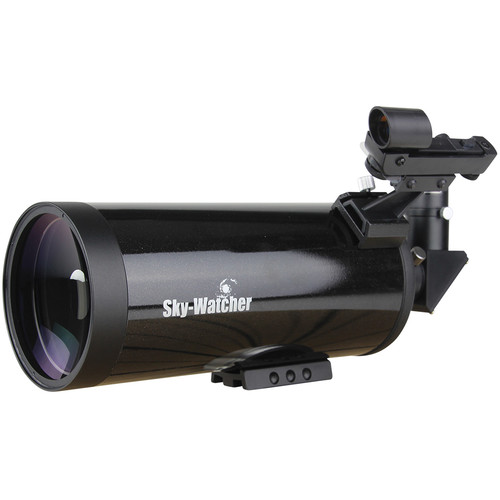
At this size, nothing beats a Maksutov in planetary and double-star astronomy.
Links to all products discussed in the article:
As always, read additional reviews before deciding to purchase. Buying it cheap means buying it twice.
$100 Bracket
- Orion 76mm Funscope TableTop Reflector
- Orion Observer II 60AZ
- Celestron PowerSeeker 60AZ
- Celestron AstroMaster 70AZ
- iOptron iExplore 70AZ (warning: very bad mount and eyepieces)
- Celestron 70mm Travel Scope
$200 Bracket
- Orion ShortTube 80 OTA (needs eyepieces, tripod, diagonal)
- Meade Adventure Scope (ST80 variant, no longer available at most retailers)
- Omegon AC 80/400 OTA (ST80 cariant, needs eyepieces, tripod, diagonal)
- Celestron PowerSeeker 80EQ
- Orion SkyScanner 100mm TableTop Reflector
- Orion SkyScanner BL102mm TableTop Reflector (same thing as SkyScanner 100 but black)
- Zhumell Z100 Portable Altazimuth Reflector
- SVBONY "Redline" Eyepiece (9mm variant)
- SVBONY "Goldline" Eyepiece (9mm variant, long eye relief good for eyeglass wearers)
$400 Bracket
- Sky-Watcher Heritage 130
- GSO 6" f/5 Newtonian Reflector OTA
- GSO 6" f/6 Newtonian Reflector OTA
- Tutorial on how to make a homemade dobsonian mount for your newtonian OTA.
- Sky-Watcher Heritage 150 Tabletop Dobsonian
- Explore Scientific FirstLight 102mm f/6.5 Achro Refractor
- Celestron Omni XLT AZ 102mm
- Sky-Watcher StarTravel 102mm f/4.9 AZ
- Celestron C90 (OTA only, needs mount and tripod)
- SkyWatcher Skymax 102mm Maksutov-Cassegrain (OTA only, needs mount and tripod)
 Icon of 1995 Toyota Tercel DX
Icon of 1995 Toyota Tercel DX